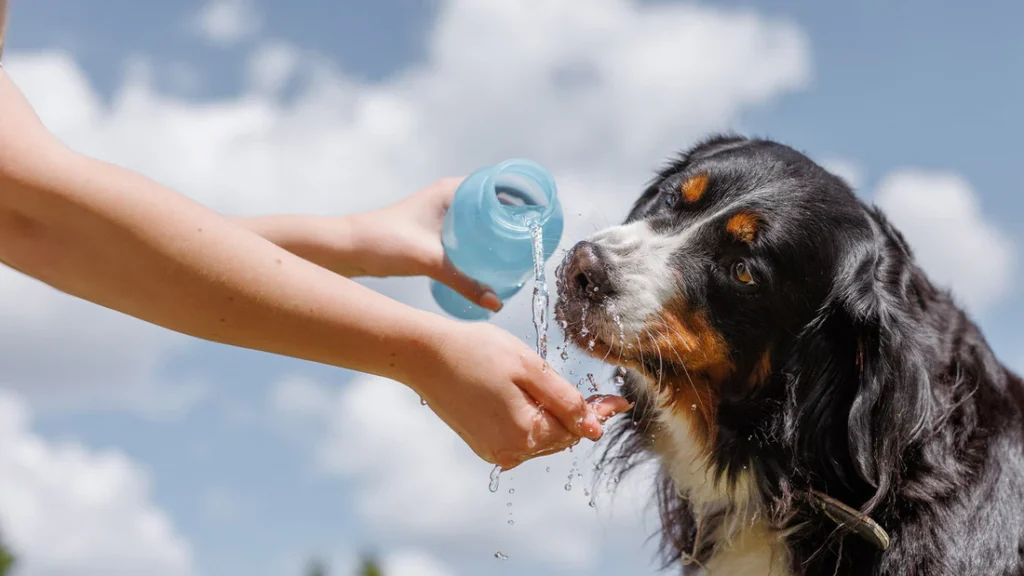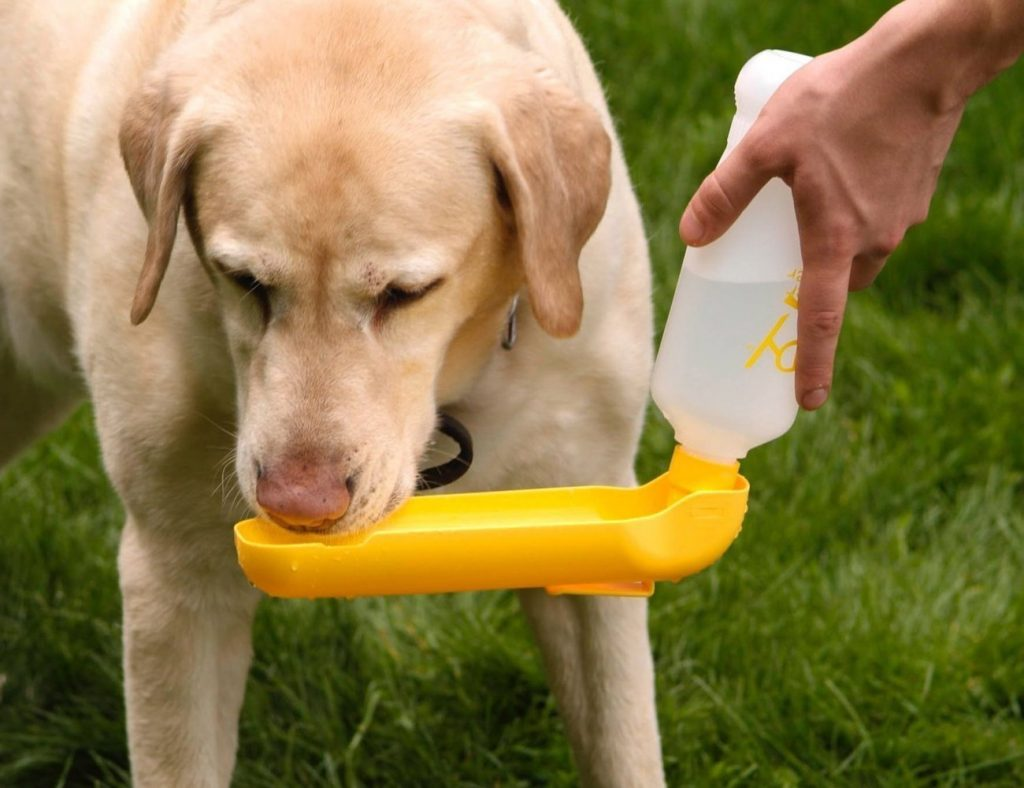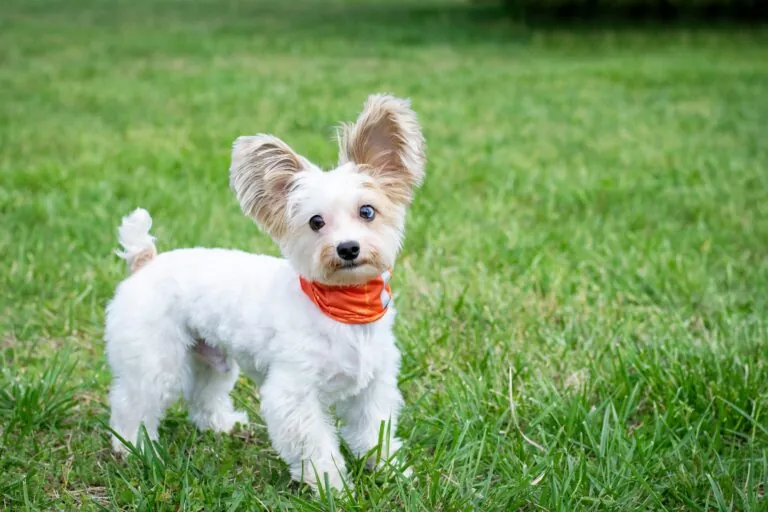Hydrating your furry friend might seem like a simple task, but when it comes to small dogs, their needs can be quite unique. With their tiny bodies, they require special care to ensure they’re receiving the right amount of water each day. This post will delve into the topic of “Pint-Sized Hydration: Tips for Keeping Your Small Dog’s Thirst Quenched and Tail Wagging”.
Maintaining proper hydration for your small breed dog is vital to their overall health and well-being. However, it’s not just about providing a bowl of water and hoping they’ll drink. From understanding their unique hydration needs, to identifying signs of dehydration, there are many factors to consider.
In the following sections, we’ll unpack practical tips to keep your little canine companion adequately hydrated. We’ll explore creative ways to encourage water intake, the benefits of wet food, and the importance of monitoring your small dog’s water consumption.
Beyond this, we’ll also look at the potential risks of dehydration in small dogs, offering advice on what to do if your pooch isn’t drinking enough. By providing in-depth insights and expert guidance, we aim to help you ensure that your small dog remains healthy, happy, and hydrated.

So, if you’re a proud small dog owner looking for a comprehensive guide to keeping your pet properly hydrated, read on. This is an invaluable resource that will help ensure your small dog’s thirst is always quenched, and their tail is always wagging.
Understanding Hydration in Small Dogs
Hydration is a critical component of a dog’s health, irrespective of the size of the dog. However, small dogs have unique hydration needs that pet owners need to understand. Small dogs have a higher metabolism and consequently, require more water intake per pound of their body weight compared to larger dogs.
The amount of water your dog requires can vary depending on factors such as diet, age, health, and physical activity. For instance, puppies and older dogs often need more water than adult dogs. Similarly, dogs eating dry food would need more water than those on a wet food diet. Also, dogs with health conditions such as kidney disease or those on certain medications may require additional water.
How Much Water Does a Small Dog Need?
Typically, a dog should drink about an ounce of water per pound of body weight daily. For example, a 10-pound dog needs about 10 ounces of water, which equates to 1.25 cups of water a day.
However, the water needs can increase if the dog is active, spends a lot of time outdoors, or if the weather is hot. Always ensure your dog has access to fresh, clean water, and monitor the water intake, especially during hot weather or after physical activity.
Factors That Influence Water Intake
Several factors can influence how much water your small dog needs daily. Understanding these factors can help you better manage your dog’s hydration:
- Diet: Dogs that eat primarily dry kibble will require more water than those consuming wet or raw diets, which contain higher moisture content.
- Environment: Hot, humid weather increases your dog’s need for water, just as central heating in winter can cause dehydration indoors.
- Health Conditions: Illnesses like diabetes, kidney disease, and Cushing’s disease can dramatically alter a dog’s hydration needs.
- Activity Level: Dogs that are more physically active will lose more water through panting and require more to stay properly hydrated.
- Age: Puppies and senior dogs are more susceptible to dehydration and may need closer monitoring.
Recognizing Dehydration in Small Dogs
Dehydration can happen quickly in small dogs, and recognizing it early can make all the difference. Dehydration occurs when the body loses more fluids than it takes in, impacting all bodily functions.
Common signs of dehydration include:
- Dry or sticky gums
- Loss of skin elasticity
- Sunken eyes
- Lethargy or weakness
- Loss of appetite
- Panting excessively
- Dark-colored urine
You can perform a simple skin tent test by gently pulling up the skin between your dog’s shoulder blades. If the skin does not quickly return to its original position, dehydration may be present.
Causes of Dehydration in Small Dogs
Understanding the root causes of dehydration can help prevent it before it becomes a serious issue:
- Illness: Vomiting, diarrhea, fever, and kidney disease can cause significant fluid loss.
- Heatstroke: Exposure to high temperatures without adequate shade or water can quickly lead to dangerous dehydration.
- Excessive Exercise: Overexertion without breaks for hydration can cause fluid depletion.
- Inadequate Water Availability: Simply not having easy access to water throughout the day can lead to dehydration, especially for small breeds.
Preventing Dehydration in Small Dogs
Preventing dehydration is easier than treating it. Here are proactive steps to keep your small dog properly hydrated:
- Fresh Water: Always provide access to fresh, clean water. Change it daily to ensure it’s appealing.
- Portable Water Bottles: Carry portable water dispensers during walks or travel.
- Offer Wet Food: Supplementing your dog’s diet with wet food adds to daily moisture intake.
- Cool Environment: Keep your dog cool in hot weather and provide shaded areas outside.
- Monitor Activity: Watch for signs of overexertion, especially in warm weather.
Encouraging Your Dog to Drink More Water
Some small dogs are picky about their water intake. Encouraging drinking can be made easier with a few tricks:
- Flavored Water: Add a splash of low-sodium chicken broth or tuna water to their bowl.
- Running Water: Use a dog-friendly water fountain; many dogs prefer running water.
- Ice Cubes: Some dogs enjoy chewing on ice cubes, which adds hydration and is fun.
- Multiple Bowls: Place several water bowls around the home to make drinking more convenient.
Special Considerations for Puppies and Senior Small Dogs
Puppies and senior dogs have specific hydration needs that differ from adult dogs:
- Puppies: Their bodies are still developing, making them more vulnerable to dehydration. Ensure frequent access to water, especially after playtime and meals.
- Senior Dogs: Aging can diminish thirst response. Encourage frequent drinking, offer wet food, and monitor closely for signs of dehydration.
Hydration management is critical for these vulnerable age groups to avoid rapid deterioration.
Role of Diet in Hydration
Nutrition plays a significant role in maintaining your small dog’s hydration levels:
- Wet Food: Canned dog food typically contains about 70-80% moisture, which can significantly boost hydration.
- Raw Diets: Properly balanced raw diets also have high moisture content, supporting hydration naturally.
- Moistening Dry Food: Adding water or broth to kibble can make meals more hydrating and palatable.
Always consult your veterinarian before making significant changes to your dog’s diet.
Traveling with a Small Dog: Hydration on the Go
Traveling can disrupt a dog’s usual drinking habits, increasing the risk of dehydration. To ensure your dog stays hydrated while traveling:
- Bring portable water bowls and bottled water.
- Offer water regularly, especially during stops if on a road trip.
- Keep travel durations manageable and provide opportunities for rest and hydration.
- Monitor closely for any signs of dehydration or stress.

Hydration and Exercise
Physical activity is essential for a healthy small dog, but it must be balanced with adequate hydration:
- Before Exercise: Ensure your dog has access to water before beginning any physical activity.
- During Exercise: For extended play sessions or walks, offer small amounts of water every 20–30 minutes.
- After Exercise: Allow your dog to drink freely but encourage small sips to prevent stomach upset.
Adjust your dog’s exercise routine based on the weather and intensity of the activity.
Recognizing Dehydration in Small Dogs
Dehydration can happen quickly in small dogs, and it’s crucial to recognize the signs early. Dehydrated dogs may show symptoms like loss of appetite, lethargy, sunken eyes, dry nose, and dry or sticky gums. In severe cases, they may also exhibit signs of shock, like a rapid heartbeat and collapse.
One simple way to check for dehydration is the skin elasticity test. Gently pinch your dog’s skin between your thumb and forefinger. If the skin quickly snaps back into place, your dog is well-hydrated. However, if the skin slowly returns to its place, your dog may be dehydrated.
What to Do If Your Dog Is Dehydrated?
If you suspect your dog is dehydrated, provide it with fresh, clean water immediately. However, avoid letting your dog drink water too quickly as it can lead to vomiting. If your dog shows severe signs of dehydration or doesn’t improve after drinking water, contact a vet immediately.
Hydration Tips for Small Dogs
Maintaining hydration in small dogs involves more than just providing water. Here are some tips to ensure your small dog stays hydrated:
- Always keep water accessible: Ensure your dog has access to fresh, clean water at all times. Regularly clean the water bowl to prevent the growth of bacteria.
- Use a suitable water dish: Small dogs can find it challenging to drink from large, deep dishes. Use a shallow dish that is easy for your dog to drink from.
- Encourage drinking: Some dogs may need encouragement to drink water. You can flavor the water with a bit of chicken broth or use a dog water fountain to make drinking more appealing.
- Provide wet food: Wet food is a good source of moisture and can help meet your dog’s hydration needs, especially if it is a picky drinker.
- Hydrate during exercise: If you’re taking your small dog for a long walk or play session, carry a portable water dish and offer water regularly.
Special Considerations for Small Dogs
Small dogs are more susceptible to dehydration because they have less body mass to draw upon during times of stress or illness. Moreover, they can lose a significant portion of their body water through panting or vomiting in a short time.
Therefore, it’s crucial to monitor your small dog’s water intake and watch for signs of dehydration, especially during hot weather or periods of increased activity. Moreover, small dogs with health issues like diabetes, kidney disease, or those on diuretic medications need special attention as they can become dehydrated more easily.
Wrapping Up
Ensuring your small dog stays hydrated is an essential part of pet ownership. With the right knowledge and a proactive approach, you can keep your little buddy’s thirst quenched and tail wagging. Always remember, when in doubt about your dog’s hydration status, it’s best to consult with a vet.
Conclusion
Proper hydration is one of the most essential elements in maintaining the health, happiness, and energy of small breed dogs. Their tiny bodies may be adorable, but they come with specific needs that pet owners must understand and respect. Small dogs dehydrate faster than larger breeds due to their higher metabolism and smaller body mass, making it crucial to be proactive about their hydration on a daily basis.
It’s not enough to simply provide a water bowl and hope for the best. Ensuring that your small dog drinks the correct amount of water requires attention to their habits, environment, diet, and lifestyle. Incorporating water-rich foods into their meals, such as wet dog food or adding a little broth to their kibble, can significantly improve daily moisture intake. Using hydration aids like pet water fountains, which encourage drinking through the sound of moving water, or portable travel bowls during outdoor activities, can make a big difference, especially for active or traveling dogs.
Recognizing the early signs of dehydration is another critical responsibility. Symptoms such as lethargy, dry or sticky gums, loss of appetite, sunken eyes, and reduced skin elasticity are all indicators that your small dog may not be getting enough fluids. Quick intervention at the first signs of dehydration can prevent serious health complications, including organ failure or heatstroke, which are especially dangerous for small breeds.
Equally important is creating a comfortable environment that encourages healthy hydration habits. Always keep fresh, clean water available in easily accessible locations. During warmer months, ensure your dog has access to shaded areas and avoid excessive outdoor activities during peak heat times. Regularly cleaning water bowls and refreshing the water supply are simple actions that greatly impact your dog’s willingness to drink.
Veterinary guidance should never be overlooked. Routine check-ups provide an opportunity to discuss your dog’s hydration status, diet, and any changes in drinking behavior that might indicate underlying health issues. Some small dogs may require adjustments in their diet or additional supplementation to maintain optimal hydration, especially if they have medical conditions such as diabetes, kidney disease, or heart problems.
Hydration isn’t merely about fulfilling a basic biological need; it’s about enhancing your dog’s overall quality of life. Well-hydrated dogs are more energetic, resilient, and better equipped to fight off disease. They have healthier skin, shinier coats, and more vibrant personalities — all reflections of a body that is functioning as it should.
When you take the time to focus on keeping your small dog properly hydrated, you are investing in their longevity and wellbeing. Every sip of water they take contributes to stronger muscles, healthier organs, and a happier disposition. Their playful antics, wagging tails, and sparkling eyes are daily rewards for your care and diligence.
In the end, small dogs may require a bit more monitoring and attention when it comes to hydration, but the benefits far outweigh the effort. They depend on us to meet their needs and to keep their pint-sized bodies running smoothly. By staying informed, proactive, and attentive, you are giving your small furry companion the gift of health, happiness, and vitality — ensuring that they continue to bring joy and unconditional love into your life for many years to come. 🐶💦🐾



